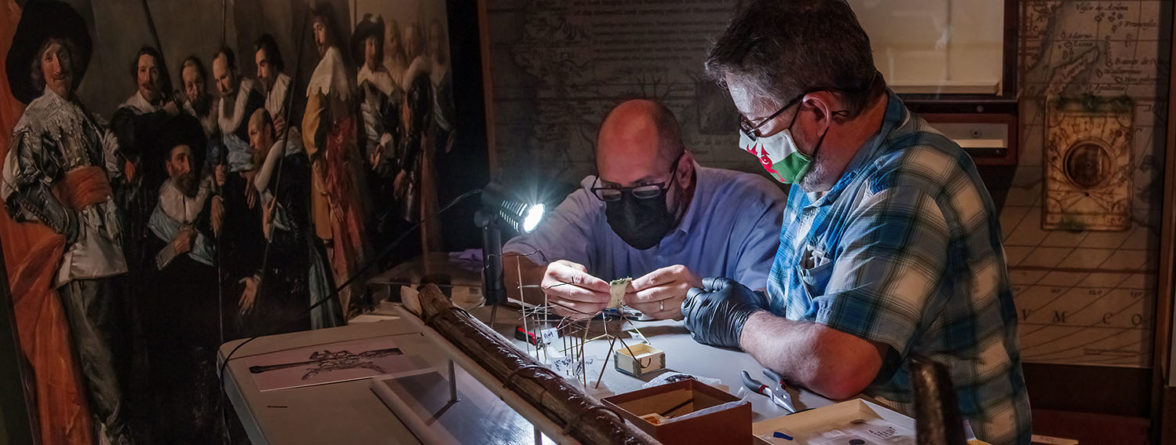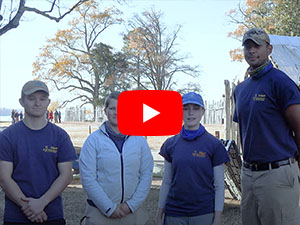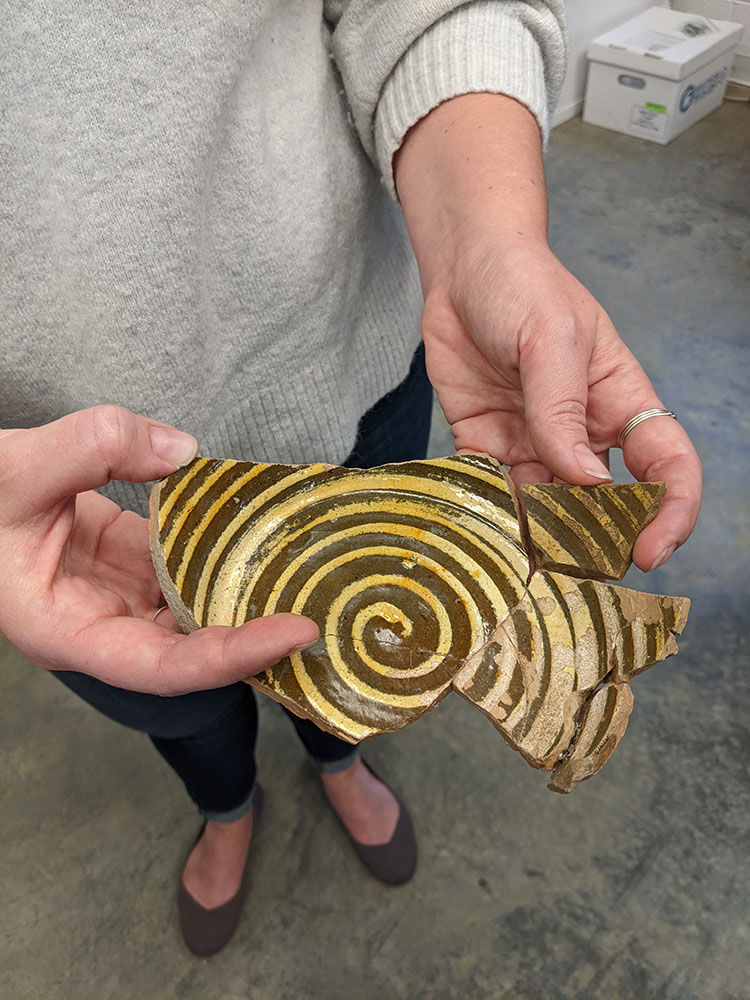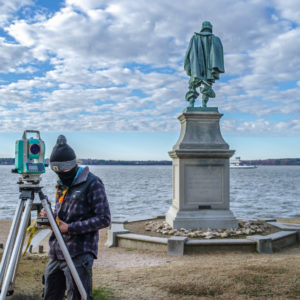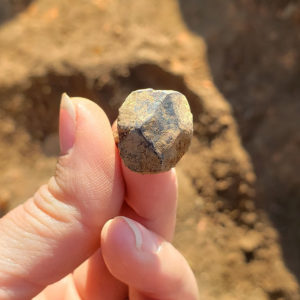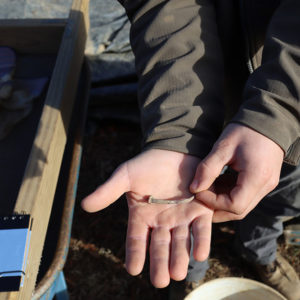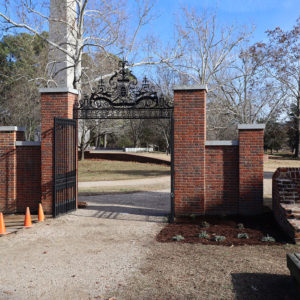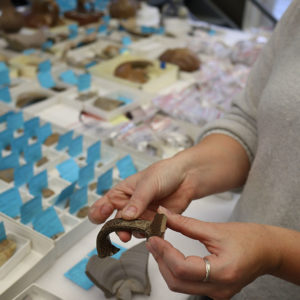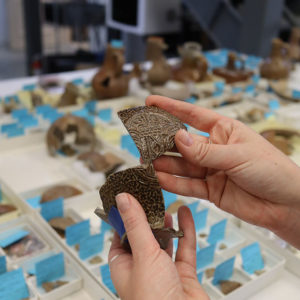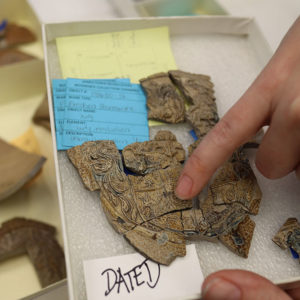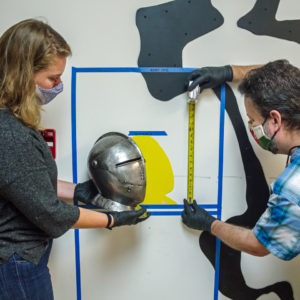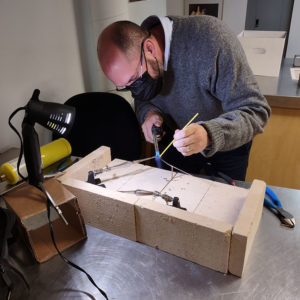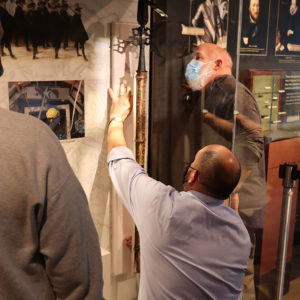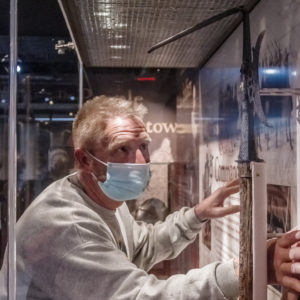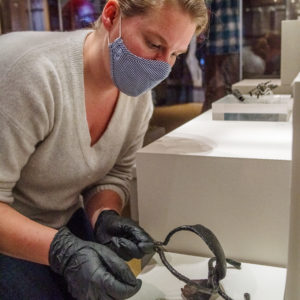As the Jamestown Rediscovery archaeologists scrape away at the soil just north of the historic 1680s Church Tower, their work is helping to shed light on the many incarnations of Jamestown’s church that stood where the Memorial Church does now. Ceramic sherds found here this month are mending with vessels already in the collection. Just feet away, in preparation for a landscaping project, the team briefly conducted excavations near the Preservation Virginia gate and found some 17th-century features and artifacts. Across the field in the Archaearium museum the collections team are currently installing “Gentleman Soldiers,” an exhibit that highlights some of the arms, armor, and other items that the colony’s well-to-do veterans brought with them to Virginia.
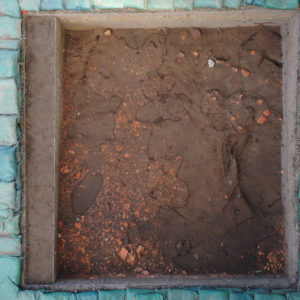
On the north side of the historic Church Tower, the team continues to find evidence of a fire event, including burned brick and nails. These artifacts are probably an indicator of Bacon’s Rebellion, during which Nathaniel Bacon and his men put Jamestown to the torch. In contrast to the scorched remains west of the Church Tower, the burned material here probably represents cleaning up after the fire. Interestingly enough, the fire helped preserve the iron nails that are currently being found, the scorching having inhibited the rust that typically accompanies metal objects so long in the ground. Even closer to the Church Tower the archaeologists have found soil and debris dug out when the building’s foundation was being constructed. This foundation extends about three feet below ground, in a ditch archaeologists call a “builder’s trench.” A round iron object, covered in rust, was just found among this soil and debris. After examination by the conservation team, this object was identified as a pommel, a counterweight on the end of a sword hilt. In the square furthest north from the Church Tower, a substantial brick layer has been found, possibly a deposit of the 1640s church construction.
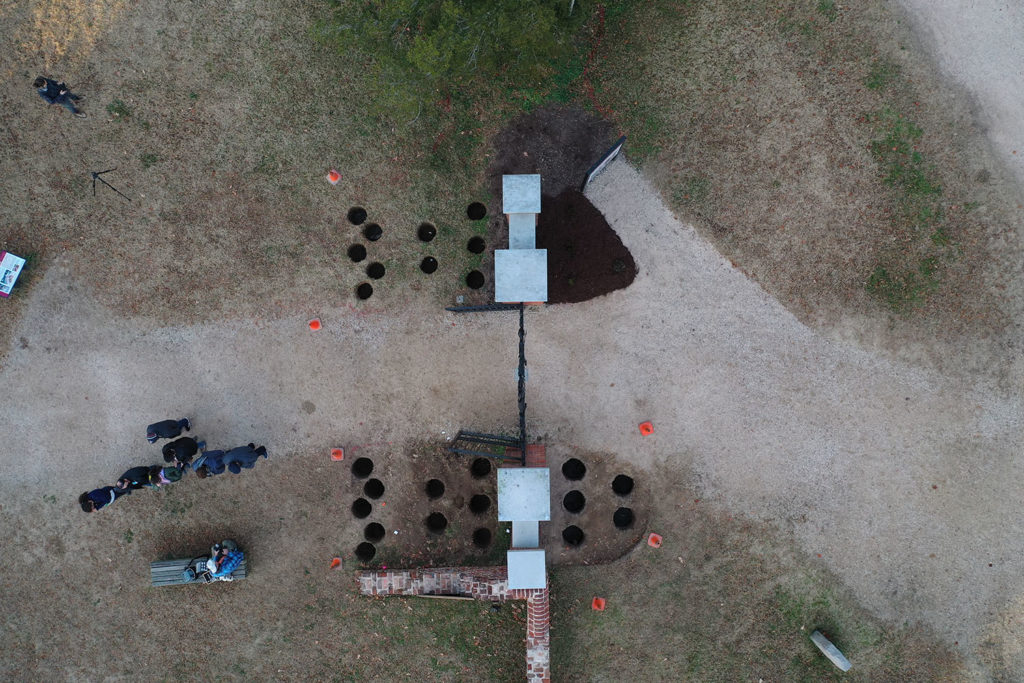
As part of a project to preserve and beautify the entrance gate to the Preservation Virginia portion of Historic Jamestowne, a number of plants have been installed on either side of it. Before they were put in, the Jamestown Rediscovery archaeology team excavated the soil where the plants were to go, creating 25 holes about 18 inches deep. This area had never been dug before and the team wanted to excavate and document any possible features prior to the landscaping work. During the excavation of the holes the team did in fact find some outlines of possible burials and post holes, which makes sense since this area is within the historic churchyard. Fragments of wine bottles, a portion of a crucible, and a North Devon ceramic vessel sherd were recovered during these excavations. Wine bottles weren’t in use until the 1650s (prior to this case bottles were used) so this could help date some of the features should additional excavations take place. In 2019, excavations were conducted prior to restoration work on the gate itself. Additional post holes, probably from a fence, as well as a portion of the Great Road were found at that time. There aren’t currently plans to continue excavations here but we now have a glimpse into what lies beneath should the area be targeted for further research.
Inside the Jamestown Rediscovery Center, the curators have been excited to find mends for existing ceramic vessels, both from discoveries out in the field and through the work of Amber Poole, our intern from William & Mary, who has been analyzing existing collection pieces. Several ceramic sherds found by archaeologists in December have mended with existing vessels in our collection. Notably both a Bartmann jug and a West Somerset bowl have been made more complete by discoveries in the excavations north of the Church Tower. Amber’s work in researching, identifying, and matching disparate sherds of our Bartmann jug collection has greatly informed us and consolidated our collection, the vessels of which number in the hundreds. We will be publishing the results of her work on our website in the near future.
The collections team is currently installing the “Gentleman Soldiers” exhibit in the Archaearium museum. Due to open in February, the exhibit presents arms, armor, coins, and other artifacts that accompanied gentlemen who came to Virginia. Found in and around the fort since the project began in 1994, the artifacts tell the story of men who had previously seen conflict in the Netherlands and Ireland and brought their accoutrements with them to the New World. Preparing the exhibit has meant months of artifact conservation, mount construction, text writing, graphic design, and collaboration with third parties to create the cases and backdrops. Highlights include a close helmet, a pistol, a horseman’s axe, and an ivory pocket sundial.
related images
- Archaeologist and Site Supervisor Anna Shackelford prepares to survey some of the features of the north Church Tower excavations.
- A larger rosehead nail, probably for a door, found in the excavations north of the Church Tower.
- Site Supervisor Anna Shackelford holds a sword pommel just found in the dig north of the Church Tower
- Archaeologist Jack Schreiber holds a nail that was preserved due to exposure to fire
- The Preservation Virginia gate with the new plants put in post-archaeology
- Curator Leah Stricker demonstrates how a newly-found Bartmann jug sherd mends to an existing partial vessel
- A handle piece from a Bartmann jug
- A recently-found Bartmann jug sherd that mends with an existing vessel in the collection. This one’s medallion bears the coat of arms of Amsterdam.
- Curator Leah Stricker points out a dragon motif on a Bartmann jug medallion
- Curator Leah Stricker and Conservator Dr. Chris Wilkins work on a mock-up of the “Gentleman Soldiers” exhibit with a contemporaneous close helm.
- Director of Collections & Conservation Michael Lavin creates a mount for one of the artifacts in the “Gentleman Soldiers” exhibit
- Director of Collections & Conservation Michael Lavin helps install a halberd in the “Gentleman Soldiers” exhibit
- Conservator Dr. Chris Wilkins prepares artifacts for the “Gentleman Soldiers” exhibit
- Senior Conservator Dan Gamble checks the installation of the halberd in the “Gentleman Soldiers” exhibit
- Director of Collections & Conservation Michael Lavin and Conservator Dr. Chris Wilkins work on a mount for an ivory sundial that will be included in the “Gentleman Soldiers” exhibit
- Curator Leah Stricker installs a scalloped rapier sword hilt in the “Gentleman Soldiers” exhibit
- Curator Leah Stricker arranges the barrel, lock, and cock from snaphaunce pistols for the “Gentleman Soldiers” exhibit


